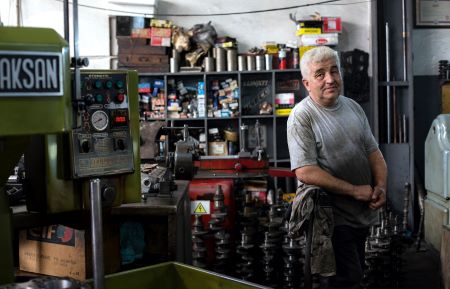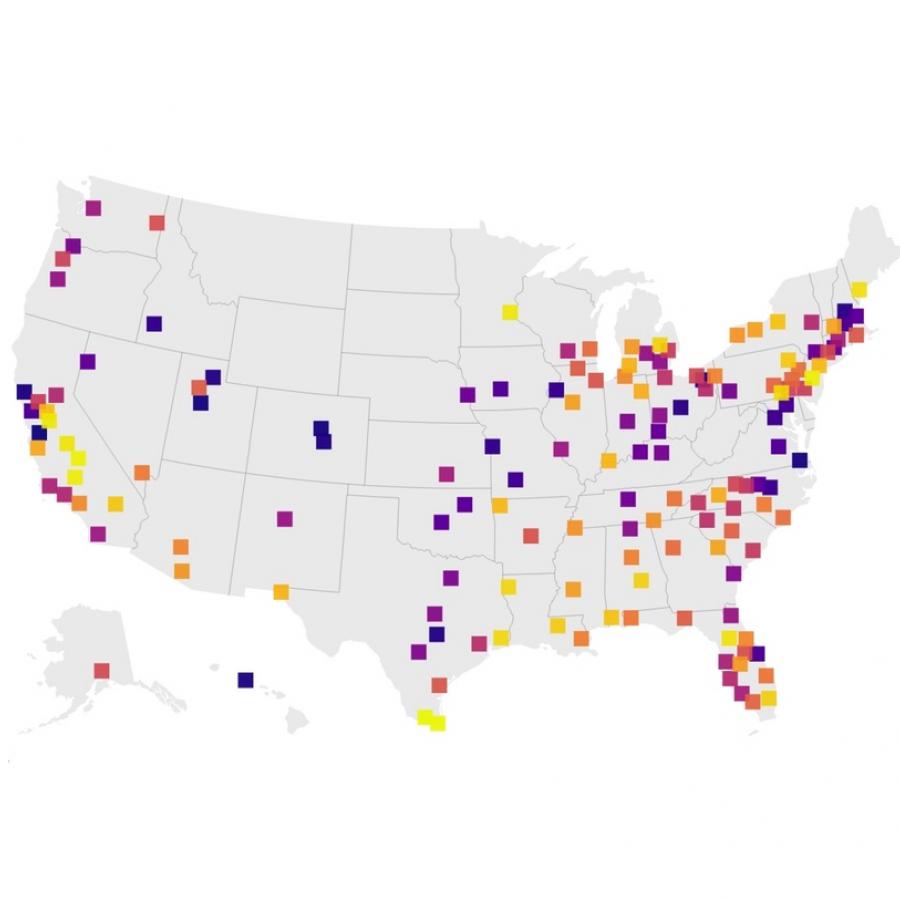Insights & Analyses
- From 1990 to 2019, GDP in the US grew more quickly than jobs. The gap between job and GDP growth, however, shrunk slightly from 2009 to 2019 due to a 0.4 percent decrease in average GDP growth.
- The impact of Covid-19 in 2020 shocked the US economy, interrupting the positive trend in jobs and GDP growth following the recovery after the Great Recession. In 2021, jobs and GDP returned to positive growth.
- Only 10 states experienced positive GDP growth between 2019 and 2020, while only Utah and Idaho experienced positive job growth.
- The region of Beaumont-Port Arthur, Texas, experienced the largest growth in GDP (7.5 percent) during the post-Covid period, while San Jose-Sunnyvale-Santa Clara, California, experienced the largest decrease (-5.5 percent).
Drivers of Inequity
Beginning in the 21st century, the economy underwent structural changes that created a growing mismatch between available workers and job opportunities. Middle-skill routine jobs diminished because of automation and outsourcing to lower-wage countries, a trend accelerated by the Great Recession. The recession also caused many businesses to restructure and eliminate unneeded labor. Together, these shifts have created a growing polarization in the job market, forcing many middle-wage workers to take large pay cuts or stop looking for work altogether. Additionally, indicators like GDP growth, which now indicate a healthy economy, are unable to capture the continued impacts of the pandemic. In recent years, the Covid-19 pandemic triggered massive job losses and economic retraction in 2020. While the US economy has rebounded as a whole from that downturn, economic recovery has been uneven across different parts of the country and across job sectors. While the pandemic recession was extreme, recovery was much faster for some than the Great Recession due to federal legislation enacted in 2020 and 2021 in order to support the economy and hardship caused by the pandemic.
Strategies
Grow an equitable economy: Policies to create good jobs for all
- Invest in infrastructure projects that increase connectivity and resilience while creating jobs in disinvested neighborhoods.
- Target economic and workforce development strategies to grow high-opportunity industries that offer good jobs and careers for people without college degrees.
- Ensure entrepreneurs of color can access the capital and know-how to launch and expand their businesses.
- Leverage the procurement power of anchor institutions to support local businesses including cooperatives.
- At the federal level, set aside a share of public contracts for businesses owned by people of color to mirror area demographics, and invest in infrastructure projects that meet resident needs in historically disinvested neighborhoods.
Strategy in Action
The Neighborhood Development Center empowers entrepreneurs to create jobs and transform low-income communities. Located in St. Paul, Minnesota, the Neighborhood Development Center (NDC) empowers entrepreneurs to create jobs and transform low-income communities. For more than 20 years, the NDC has been working with low-income residents of urban neighborhoods to develop talent through training, financing, technical assistance, and business incubators. It has trained more than 6,000 low-income entrepreneurs and extended more than $26 million in loan capital to their businesses. These efforts have had widespread community impacts. NDC graduates have created 4,000 jobs through their businesses. These businesses return millions of dollars each year to their neighborhood economy in payroll, taxes, and rent. The NDC model is now being replicated in Detroit through a partnership with ProsperUS. Learn more.
Photo: Alev Takil on Unsplash






